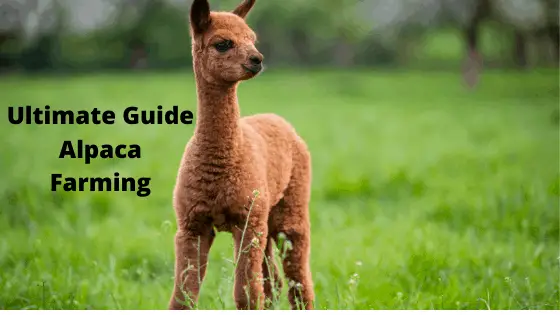As a general rule Learn the Animals 1) Visit some successful Alpaca Farms 2) Vist some alpaca shows 3) Check your local Zoning 4) Build your Business Plan 5) Secure Financing 6) Select a Farm 7) Build Barn, Fencing 8) Choose type and acquire Alpacas 9) Secure a local Vet 10) Feed and Breed.
How to Start an Alpaca Farm
How to Start an Alpaca Farm -Alpacas can be a good addition to a farm. They can be reared as an alternative livestock project. They fit well in the diverse farming process.
The marginal pastures are suitable for raising alpacas, with some complementary feeding under certain conditions.
If you are looking for a detailed guide on commercial alpaca farming, then this post is for you.
Alpacas are members of the Camelidae family. They are modified ruminants with a stomach consisting of three compartments, with cloven hooves and chew the cud, such as sheep and cattle. The young ones of alpaca are called crias.
Although it was previously classified under the same genus as the llama, the alpaca genus was changed from Lama to Vicugna in 2001 after a genetic analysis that showed that the alpaca descended from Viconia, not Guanaco.
History of Alpaca Farming
The llama appears to have originated from the Central Plains of North America about 40 million years ago.
They migrated to South America about three million years ago during the great American exchange. By the end of the last ice age (10,000 to 12,000 years ago), camelids had gone extinct in North America.
Alpacas were first imported to the United States in 1984. The majority of alpacas live in South America, with growing flocks in North America, Australia, New Zealand, and Europe.
As of 2007, there were more than seven million llama and alpacas in South America and because of imports from South America in the late twentieth century, there are now more than 158,000 lamas and 100,000 alpacas in the United States and Canada.
Alpaca Characteristics
Two Types of Alpaca
There are two types of alpacas, Huacaya and Suri.
Huacaya
Huacaya is the most common variety of alpacas. The fiber of Huacaya alpaca grows perpendicular to the body. It forms a locking structure that surrounds the body with fibers, giving the animal a fluffy, spongy appearance.
18 ways Alpaca Farmers make Money
Suri
Suri is a less common group of alpacas. Suri alpaca fibers grow parallel to the body and hang on both sides of the body in curly rings.
Suri fiber does not protrude from the body, but parts along the spine are attached along the sides, giving the animal a slender and elegant look.
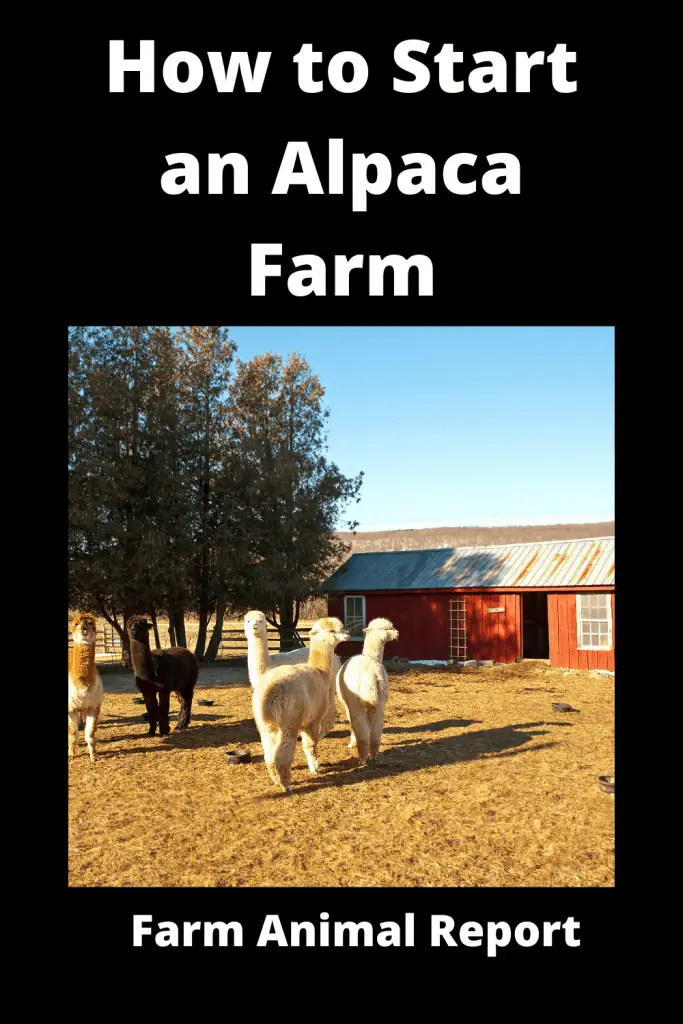
An adult alpaca usually weighs between 130 and 200 pounds. The average height at the withers is 36 inches. The average life expectancy of alpaca is between 15 and 25 years old.
22 primary alpaca colors are ranging from black and white, including many different colors, brown, gray, tanning, and creams.
Alpacas tend to be a single, uniform color, but occasionally will have white markings on the face, neck, or legs.
Alpaca Housing and Fencing needed
Alpacas are social animals and prefer to be together as a herd, big or small. They are gentle and calm (communicate with a soft hum), odorless, and indulgent in their care. Four to five alpacas can be raised on an acre of land.
The Alpacas must be provided with natural or man-made shelter with sufficient ventilation and space to escape heat, cold, and precipitation. Depending on the climate, heating and cooling procedures are also necessary.
They do not attempt to “escape”, either through or over the fence. The three-sided case is sufficient for their accommodation.
Fencing should be sufficient to contain the alpaca, as well as to keep away predators. Fences should be 48 inches in height, although many producers recommend 60 inches and no more than 12 inches from the floor.
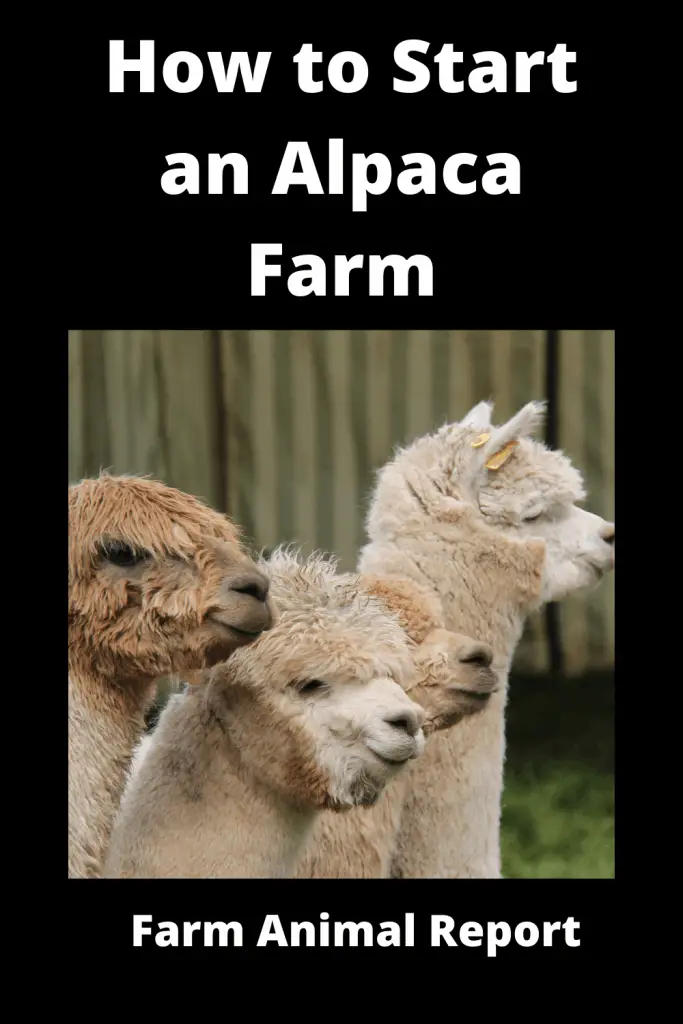
Alpaca Diet and Nutrition
Alpaca feeding options are very wide; a wide range of commercial and farm feeds are available. The main determinants include feed cost and availability, nutrient balance and energy density required.
Small, active alpacas require more nutrient concentration compared to mature animals due to their smaller digestive potential.
Alpaca production practices are similar to sheep. Water must be available at all times. Alpacas are adaptive feeders, eating herbs, grasses, shrubs, and trees. Alpaca can be kept on a variety of pastures and straw.
Approximately 5 to 10 alpacas can graze per acre, depending on the quality of the pasture. A straw bale generally fed an adult alpaca for a week.
Due to the high feed conversion ratio, it is not recommended to use high protein hay, such as alfalfa, because animals can easily become overweight.
During periods of stress, animals should receive the additional feed, such as small alfalfa grains, oats, or mixed feed grains designed specifically for alpacas. Be careful if feeding straight pellets directly because alpaca often choke on the pellets.
If the pellets are fed, they should be mixed with coarse feed or spread in a large pan. The procedure may also put smooth rocks in the pan to prevent the Alpaca from gobbling to the pellets very quickly.
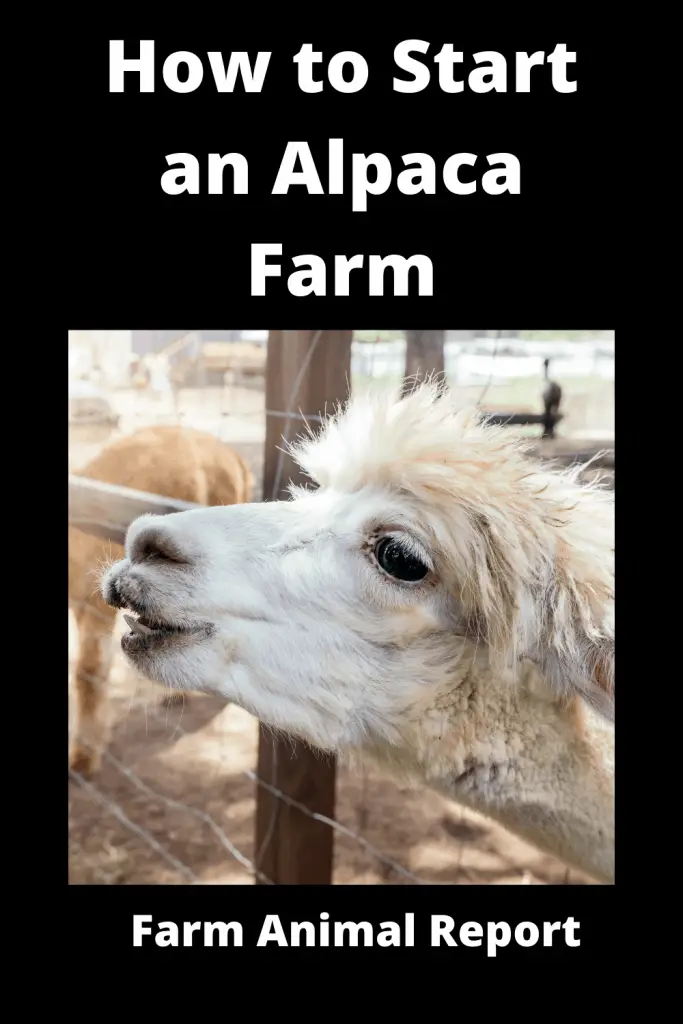
Energy
The main source is pasture and fodder, cereal grains can be supplemented as high-energy fodder in certain conditions (such as late pregnancy, early lactation, weaning, work, etc.), although Alpacas generally thrive with minimal or no grain. The grass is better than Alfalfa. Alfalfa can lead to hypercalcemia.
Protein needed in Alpaca’s Diet
Relatively low protein is required for their growth. In a diet of alpaca 8 to10 percent crude protein for maintenance, 12 to 14 percent for growing stages, late gestation, or early lactation.
Crias (young ones) have a higher requirement of 16 percent crude protein in the diet.
Alfalfa hay contains 20 percent crude protein and grass hay contains 12 percent
Fiber
Alpacas require 25 percent or more of crude fiber, the main source of which is forage.
Lack of fibers can reduce stomach performance and is associated with gastric and duodenal ulcers
Salt
Free availability of salt must be offered in a container in a sheltered area. Salt should be treated with iodine (except for areas where iodine deficiency is not considered a problem)
Calcium and phosphorus
Balanced daily consumption is important, especially for young animals and adult reproductive animals. A sufficient ratio of 1.2: 2.1 of calcium to phosphorus is provided in the diet
Cereal grains usually provide enough phosphorous except soil that is deficient in phosphorous
Vitamins
Alpacas also need certain vitamins.
- Hay based on proper treatment contains enough vitamins A and K
- Alpacas generally get enough sunlight for vitamin D. However, in northern latitudes or during the winter months they may not get enough sunlight, thereby developing rickets.
- Give vitamin-mineral mixes it will cover deficiencies.
Trace minerals
Trace minerals required in the diet are Selenium, zinc, magnesium, cobalt, and copper.
- Trace minerals are added to a salt container
- The copper (Cu) to molybdenum (Mo) ration should be 6:10.1 in diet
- Sulfur levels over 2000 mg/kg can result in a copper deficiency
- High levels of zinc can suppress copper absorption
Breeding of Alpaca’s
Alpacas have an unusual reproductive cycle. Females are induced ovulators. Through the act of mating, the female releases an egg and is often fertilized on the first attempt.
The female alpaca does not go into heat.
Alpaca males and females mature sexually at different ages. Females reach puberty at about 12 months old; males do not become sexually mature until around three years of age. Male Alpaca mature sexually at age between 2-3 years.
Mating
Alpaca mate in a kush position (lying down), which is quite unusual in a large animal. They mate for a long time (20–45 minutes), also unusual in large animals.
Gestation
The gestation period of an Alpaca is 11.5 months (350 days). Dams (female alpaca) do not lick their babies, as they have an attached tongue that does not reach the outside of the mouth more than half an inch (1.3 cm). Rather, they will nuzzle and hum their newborns.
Crias
A Cria is a name for the baby Alpaca, Cria is the Spanish word for baby. Crias are usually born with all females from the herd gathered around, in an effort to protect against alpaca males and potential predators.
Alpacas give birth in a standing position. Delivery is usually fast and hassle-free, in less than 30 minutes. Most deliveries occur between 8 a.m. and noon, during warm daylight hours.
This may increase the survival of Cria by reducing deaths from hypothermia during cold nights. This birth pattern is expected to be a continuation of the birth patterns observed in the wild.
Crias stands and walks and tries to suckle within the first hour after birth. Crias are partially fed with milk that contains less fat and salt and also contains more phosphorous and calcium than cow’s milk or goats milk.
The alpaca female will only produce about 60 ml of milk, so you must frequently feed the Cria to receive the nutrients it requires.
Breeding methods
There are three breeding method in alpaca
- Harem mating
- Field mating
- Hand mating
In the harem mating method, the males are left with the females for most of the year.
In the field mating method, the female turns into a field with the alpaca male and is left there for a while. This is the easiest method for labor, but it is the least useful for predicting a possible birth date.
The manual mating method (hand mating) is the most effective method, but it requires more work on the part of the human being involved. Male and female alpacas are placed in the same pen and mating is observed.
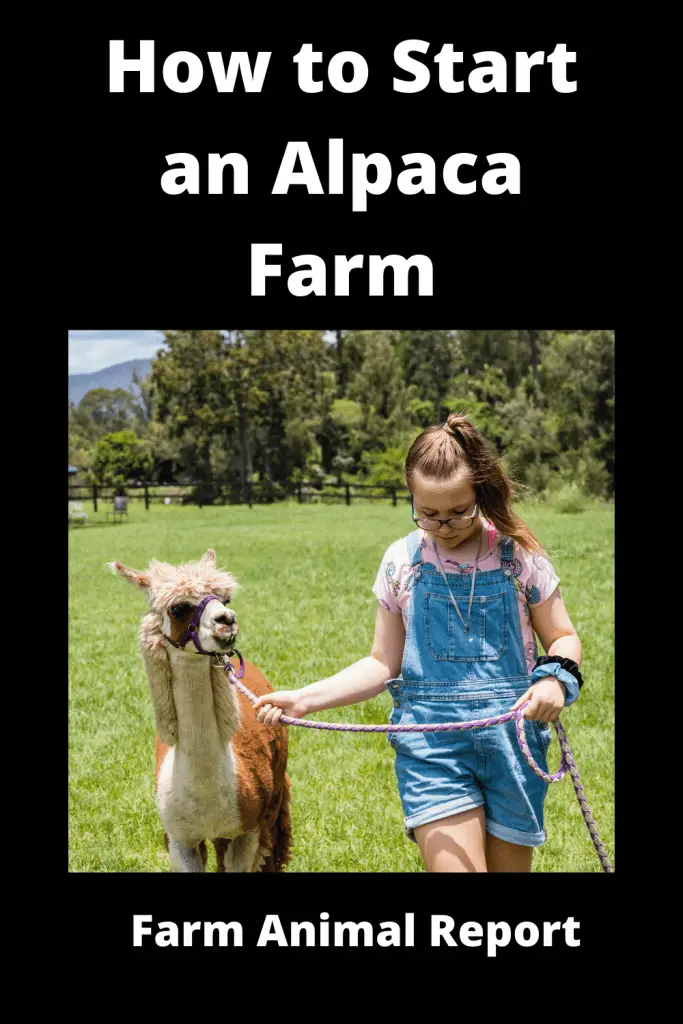
Then they are separated and re-mated every day until one or another refuses to mate. Usually, one female can get into two matings using this method, although some stud males routinely refuse to mate a female more than once.
The separation is supposed to help keep the sperm count high for each mating, and also helps keep the alpaca female reproductive tract in good condition. If the mating does not work in 2-3 weeks, the females mate again.
Pregnancy
Alpaca should be tested for pregnancy after mating at two, three, six and at least 12 weeks. Pregnancy is diagnosed by several methods, some are given below.
- For the “spit” test, bring a possible pregnant dam to a healthy male. If a stud tries to mate with her while she is lying down for a short period, she is not pregnant. If she stays on her feet, spits on, attacks, or prevents male from mating than she is presumed pregnant. This test gets its name due to spitting the dam on the male if she is pregnant.
- A blood test is done for progesterone testing; a high level of progesterone indicates pregnancy.
- With palpation, the vet or breeder feels inside the alpaca to detect pregnancy. There are some risks to alpacas, but this can be an accurate way to detect pregnancy.
- Ultrasound is the most accurate method for an experienced veterinarian, who can perform an external examination and detect a fetus as early as 45 days.
Handling and transport
Alpacas are intelligent and highly trainable animals, they can easily be taught to enter a barn or corral to eat.
If you place an arm around the base of the neck and another arm that supports the tail region or the flank on the opposite side, this method is useful to restrain the animal.
During examination and treatment, halter trained alpacas can easily be taken to a smaller area.
Specially designed alpaca chutes should be used for reproductive exams and other procedures.
It is especially important to maintain control of the alpaca head. The neck is very muscular and can move at amazing speed.
There is no need for anesthesia for most procedures. The small animal-filled pencil gives you enough control to manage shots and make a body condition recording.
You should limit the stress during transportation, by training the alpaca with a halter, lead and load into the transportation vehicle.
You should take care when transporting alpacas, especially during extreme weather. The vehicle must be well-ventilated, and animals should be checked for signs of heat stress or hypothermia at regular intervals.
You should not tie alpacas during transport, as this can result in serious injury or death.
Diseases of Alpaca
There are many congenital, viral, bacterial and nutritional diseases in Alpaca. Some of them are given below
Congenital diseases
Here are some common congenital diseases that affect alpaca.
Choanal Atresia
The condition caused by the failure of the inner nares (choanae) to open during fetal development is the most common congenital disorder. It can be unilateral or bilateral and may lead to complete or partial blockage.
Accordingly, the initial clinical presentation is a variable degree of respiratory distress in the newborn. pain becomes more apparent during nursing, and Crias usually gasp as milk is inhaled. Surgical correction is not recommended.
Wry face
The wry face is a congenital disorder in which slight to the severe deviation of the maxilla occurs. The involvement of mandible is not necessary but some it also happens.
When the deviation is severe and affects the closure of the nostrils and the lack of apposition of the incisors and the dental pad, then euthanasia is the only option for the baby.
Mostly, this disorder appears with choanal atresia.
Bacterial diseases
Alpaca can suffer from several bacterial diseases such as:
Brucellosis
Brucellosis has been identified in alpacas, but the incidence of this disease is naturally low. The highest rate is found when alpacas are kept together with infected small ruminants.
Brucellosis is characterized by miscarriage and, to a lesser extent, testicular inflammation and sex dependence glands infection in males.
Tuberculosis
Tuberculosis is a bacterial infection caused by Mycobacterium Bovis, and it is present in alpaca, but not very common.
The risk to alpaca is high in areas where Tuberculosis infection is endemic in cattle and badgers and where biosecurity is inadequate.
Johne’s disease (Paratuberculosis)
The natural incidence of Johne’s disease is low in alpacas. Alpacas sometime show different signs such as diarrhea, lose weight before death.
Clostridium perfringens (Type A, C, and D)
Type C and D are common in alpacas. Vaccination of Type C and D is a routine measure in most herds.
Type C perfringens is a very important pathogen under stressful conditions, especially in South America, and leads to a high death rate in crias under 4 weeks.
Clinical signs are similar to signs of type A infection in other types, with a rapid onset of neurologic changes followed by death soon
Alpaca fever (Streptococcus zooepidemicus)
The appearance of this condition often precedes stressful conditions. Alpacas respiratory infections caused by bacteria are still relatively rare.
Viral diseases
Alpacas can be affected by various viral diseases such as:
- Adenovirus
- Bovine viral diarrhea virus
- Alpaca respiratory coronavirus
- Equine herpesvirus 1 infections
- Foot and mouth disease
Important Alpaca Health Indicators
Lethargic
If the animal is lethargic, faded in color or very thin, it may be unhealthy. In general, alpacas are vigilant, curious and energetic animals, and their coats are shiny. Adult alpaca weight can range from 48 kg – 84 kg (106 – 185 lbs.), depending on height and age.
Lying Down
So if alpacas lie on the ground and refuse to wake up, or are less social with herd members, or look and look more than usual, they may be infected or sick.
If the condition is simple and easy to identify, you can try to treat it yourself. However, if it is more serious, consult a veterinarian.
Worming
Be careful how often you administer wormer in alpacas. Often, wormers can make worms more resistant to treatment, which leads to the need for more focused or expensive drugs.
Monitor your area and manage a species-specific wormer or when an infection is already detected. The density of alpacas on a farm determines the rate of disease spread. Study alpaca droppings for signs of worms and rotation on new pastures if worms are detected
Each animal will have a different personality. Each farm will have its climate and landscape challenges.
Each farm deals with the health challenges of animals and herd. But monitoring these healthy alpaca indicators will allow early detection and treatment of any condition. Keeping your flock healthy means you spend most of your time enjoying your pets.
Marketing Animals and Products
Alpacas can provide two sources of direct income: fiber and live-sales.
The live sale uses for selling alpacas are basically breeding or fiber producing stocks, although they also make good healing animals.
Alpacas are raised to be fiber-producing animals. They are usually shorn annually and produce between 50 and 90 ounces of first-quality fiber and 50 to 100 ounces of second- and third quality fiber, though some animals may exceed these levels.
Alpacas were bred as fiber animals. Of course, they should not have much of the guard hair mixed with their fibers.
The global market price for alpaca fibers ranges from $ 2 to $ 10 per pound. Only the highest grades of fibers, with a diameter of more than 20 microns, will bear the highest prices.
Each stage of treatment, including cleaning, combing, spinning, knitting, and finishing, adds value.
Ready-to-wear may be sold for $ 10 an ounce, and hand-knit clothes have been sold for $ 1,000. The alpaca community is building both the commercial and cottage industries of alpaca fibers as the national herd grows.
Commercial fiber processors prefer white fibers, but there is an appropriate market for colored fibers within the cottage industry.
Fiber artists enjoy working with fibers of natural color as it does not require an additional step of dying. However, producers must realize that developing the potential of this fiber market requires time and effort.
Some positive aspects of alpaca fibers are smoothness, uniform softness, flexibility, and thermal ability. Alpaca fibers provide warmth despite their lightweight
Spinners, weavers, and knitters use the fiber for fine textiles. The sheared fiber from one alpaca is usually enough to make four to six sweaters.
There is an application for every grade of alpaca fiber, but the clothing grades, 14 through 25 microns, are in the highest demand.
Final Thoughts
Alpaca Owners Association
I love alpacas. I think everyone should have them. But to make a living you need to get an extra “daily job” with outside income or treat alpaca as a business or a combination of the two.
Although alpaca farming is the easy part of the work schedule. They are shorn once a year. They need herd health checks every few months, with toe trimmings, dental checks, and weight.


